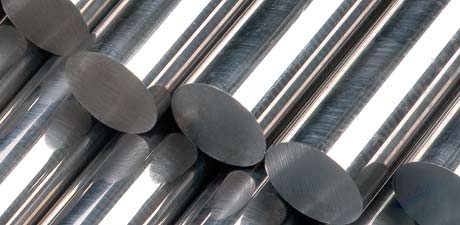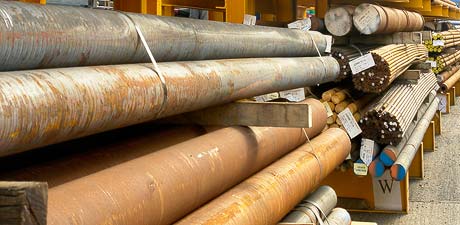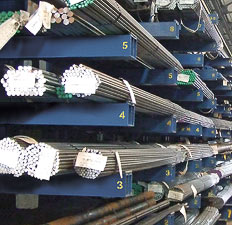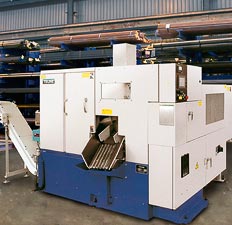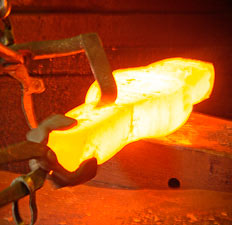Technical Data
Metallurgical Terms
Smelting.
A metallurgical process, or series of processes, whereby a metal or compound is separated in a state of fusion from its ore to other material with which it is chemically combined or physically mixed. The separation of the impurities involves the fusion of the ore with suitable fluxes to produce a melt consisting of two layers, the molten metal sinking to the bottom, whilst the gangue together with the flux forms a slag which floats on the top. Care should be taken to distinguish between the terms smelt and melt.
Sn.
Chemical symbol for tin.
S-N Curve.
Stress-number curve showing the number of reversals to rupture for a given applied stress in a fatigue test.
Snowflakes.
(See Flakes).
Soaking Pit.
Originally a soaking pit simply consisted of a hole in the ground, lined with fire-brick, in which an ingot was placed for soaking, i.e., to allow the heat from the still molten steel in its interior to extend to the surfaces and thus render the temperature of the ingot approximately uniform throughout. Modern soaking pits are heated. There are several types:- (1) The regular reversing regenerative type of pit. (2) The one way fired recuperative pit where the flame enters at one end and leaves the pit at the same end but at a lower level. (3) The bottom-fired recuperative pit where the flame enters from the bottom. (4) The tangentially-fired circular pit where the flame enters tangentially. (5) Electrically heated by a current passed through a coke-filled trough at the bottom, with or without auxiliary oil firing.
Solid Solubility.
The extent to which one metal is capable of forming solid solutions with another. This capacity varies considerably: some metals are almost insoluble in each other, whilst others are mutually soluble in all proportions.
Solid Solutions.
A homogeneous solution of two or more crystallized bodies in the solid state.
Solidus.
A line or surface in a constitutional diagram indicating the temperatures at which solidification is completed or melting begins in alloys and other melts of different composition, i.e., the line or surface below which the alloys are in a solid condition (Cƒ. Liquidus).
Solution Heat Treatment.
A treatment in which an alloy is heated to a suitable temperature and held at this temperature for a sufficient length of time to allow a desired constituent to enter into solid solution. It is often followed by rapid cooling to hold the constituent in solution. The material is then in a supersaturated, unstable state and may subsequently exhibit age hardening.
Space Lattice.
The three dimensional geometric pattern in which the atoms of a metal arrange themselves, and upon which a crystal is built. There are several well known lattice configurations, but most metals crystallize in one of three types: (1) face centred cubic; (2) body centred cubic; and (3) close packed hexagonal.
Spalling.
(a) The cracking off of thin flakes from the surface of a metal. It is also known as exfoliation and flaking.
(b) A term used to cover a number of different forms of disintegration in refractories. It has been suggested that spalling is the breakdown of the structure of a refractory owing to the irregular mechanical strength of a brick or of a more or less solid mass of brickwork when subjected to thermal shock.
Spark Testing.
A method of determining the approximate composition of steel by holding a sample on a grinding wheel and producing sparks. An experienced operator can detect differences in the carbon content of steels of 0.05% in the range up to 0.35% and 0.10% in the range from 0.35 to 0.60%. The effects on the spark of alloying elements such as tungsten, molybdenum, chromium, nickel, silicon and manganese are also recognizable.
Spheroidizing.
A process of heating and cooling steel through a selected temperature cycle within or near the transformation range, in order to obtain the carbide in a globular form. The process is usually applied to high carbon steels to obtain improved machinability, to facilitate subsequent cold-working or to obtain a desired structure for subsequent heat treatment.


